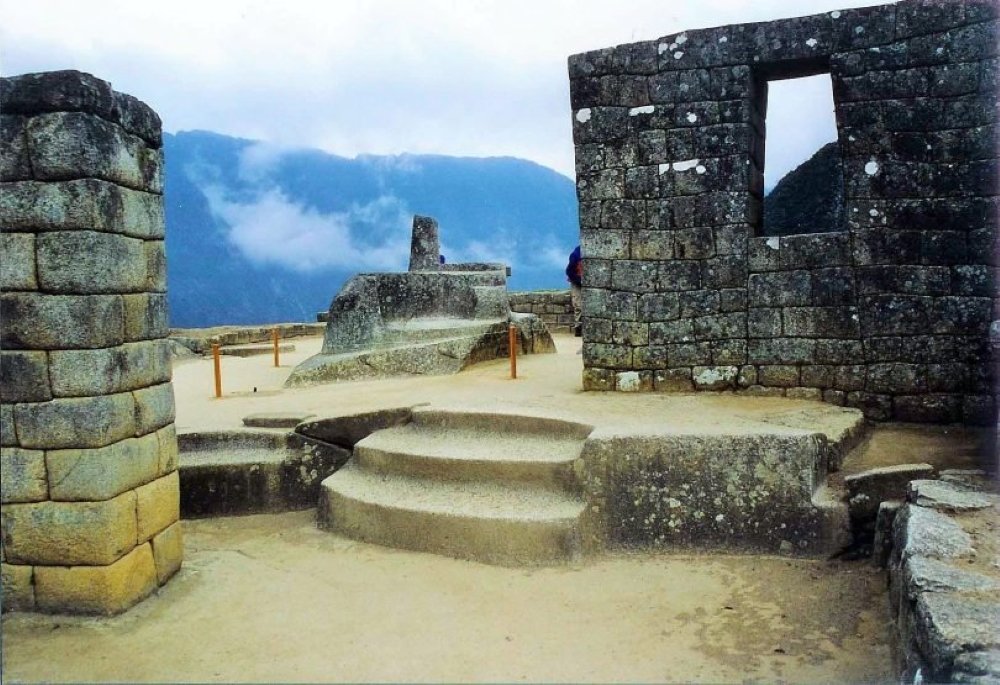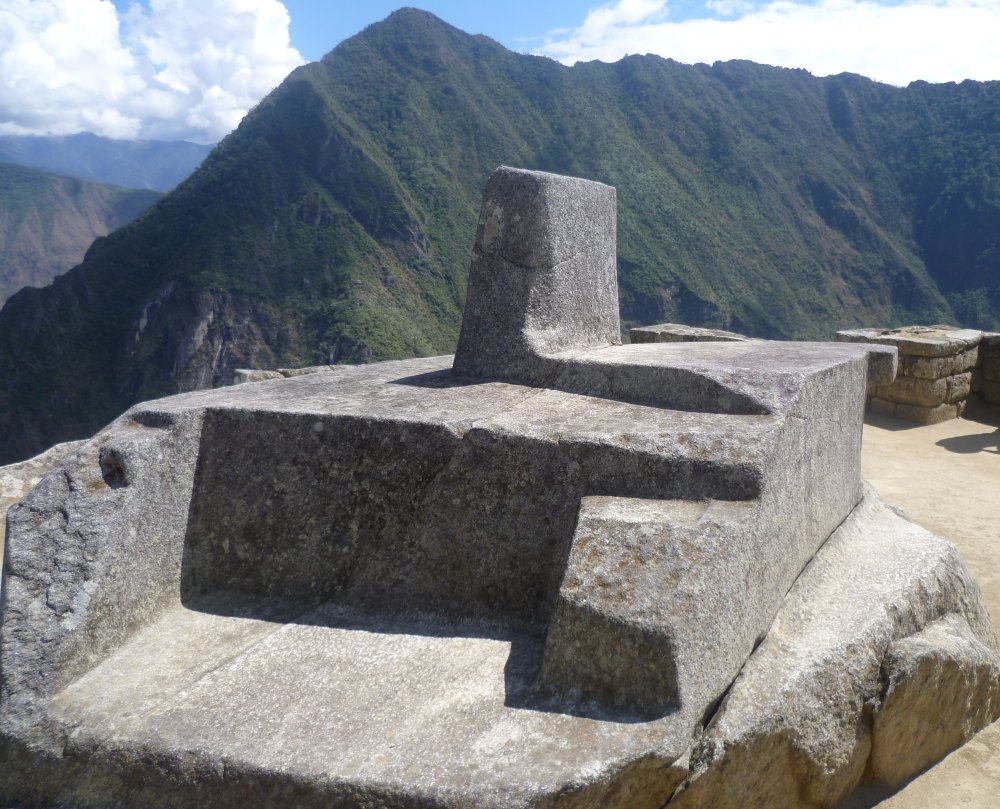Inti huatana in Machu Picchu | Cusco
The term “Intihuatana” comes from Quechua, the language of the Incas, and translates as “where the sun is tied”. This name suggests the astronomical and ceremonial function of the structure. It is believed that the Intihuatana was used by Inca priests to make important astronomical observations, such as determining the solstices and equinoxes, and to mark the passage of time in relation to solar cycles. The stone carved in the shape of a column served as a type of sundial, allowing the Incas to make precise measurements of the sun’s position throughout the year. The Intihuatana was considered a sacred place and a center of connection between the earthly world and the spiritual world according to Inca beliefs.
History of the Inti Huatana in Macchu Picchu Picchu
The history of the Intihuatana at Machu Picchu is shrouded in mystery and fascination, but here is a summary based on what is known so far:
- Construction
The Intihuatana was built during the height of the Inca Empire, around the 15th century. Machu Picchu as a whole was built by the Incas around 1450 A.D., during the reign of Emperor Pachacutec.
- Astronomical purpose
It is believed that the Intihuatana had an important astronomical function. The structure is designed in such a way that during certain times of the year, such as the solstices and equinoxes, the shadow cast by the stone on the platform aligns perfectly with key astronomical points. This suggests that the Intihuatana was used for astronomical observations and to mark the passage of time in relation to solar cycles.
-
Ceremonial and spiritual aspect
In addition to its astronomical function, the Intihuatana was a sacred and ceremonial place for the Incas. It was believed to have mystical powers and was associated with the veneration of the sun and other Inca deities. It was a place of connection between the earthly world and the spiritual world.
- Rediscovery
The Intihuatana, like the rest of Machu Picchu, was rediscovered by the American explorer Hiram Bingham in 1911. Its importance as an archaeoastronomical site was recognized by researchers shortly after its discovery.
- Preservation and protection
The Intihuatana, like the rest of Machu Picchu, has been carefully conserved and protected by Peruvian authorities to ensure its preservation. It is considered one of the most important and sacred architectural elements of the site.
In summary, the Intihuatana at Machu Picchu represents the complexity of the Inca cosmovision, combining astronomical, ceremonial and spiritual aspects in a unique architectural structure. Its function as an astronomical observatory and its religious importance make it one of the most fascinating places in Machu Picchu.

How to get to the Inti Huatana of Machu Picchu?
To get to the Intihuatana at Machu Picchu, you must first get to the archaeological site of Machu Picchu. Here is a step-by-step guide:
- Get to Aguas Calientes: Aguas Calientes, also known as Machu Picchu Pueblo, is the starting point for the visit to Machu Picchu. You can get to Aguas Calientes by train from Ollantaytambo station or by bus from the city of Cusco.
- Buy entrance tickets: Once in Aguas Calientes, buy your entrance tickets to Machu Picchu at the Machu Picchu Control Office or online in advance through the official website of the Ministry of Culture of Peru.
- Travel to Machu Picchu: From Aguas Calientes, take one of the buses that go up to Machu Picchu. These buses leave regularly from the Aguas Calientes bus station and will take you to the main entrance of Machu Picchu.
- Entrance to Machu Picchu: When you arrive at Machu Picchu, go through the entrance control and follow the signs to the archaeological site. It is important to bring with you your entrance ticket and your identity document.
- Exploring Machu Picchu: Once inside Machu Picchu, you can explore the archaeological site at your own pace. Follow the marked trails and signs to the Intihuatana, which is located at the top of the citadel.
- Visit to the Intihuatana: Once you arrive at the Intihuatana, you can admire this sacred structure and learn about its history and significance. Remember to respect the indications of the site staff and not to touch or damage the structure.
Following these steps, you will be able to reach the Intihuatana in Machu Picchu and enjoy this unique experience in one of the most fascinating places in Peru.

Recommendations to visit the Inti Huatana
Here are some recommendations for visiting the Intihuatana at Machu Picchu:
- Book early: Make sure to book your entrance tickets to Machu Picchu in advance, as access to the site is limited and can sell out quickly, especially during peak tourist season.
- Arrive early: Try to arrive early in the morning to avoid the crowds and enjoy a quieter, more serene experience at Machu Picchu. Also, lighting conditions are usually better for taking pictures early in the day.
- Protect yourself from the sun: The sun can be very strong at Machu Picchu, so be sure to bring sunscreen, a hat and comfortable, breathable clothing to protect yourself from the heat and solar radiation.
- Follow the indications: Respect the indications of the site staff and follow the rules for visiting Machu Picchu. Do not touch or climb on the archaeological structures, including the Intihuatana, and do not leave trash on the site.
- Take your time: Take time to explore the Intihuatana and its surroundings. Contemplate the beauty and majesty of this sacred structure and take pictures to remember your visit.
- Educate yourself: Before your visit, research the history and significance of the Intihuatana so that you can better appreciate its cultural and spiritual importance. Consider hiring a local tour guide for more information during your tour.
- Enjoy the moment: Last but not least, take the time to enjoy the moment and the unique experience of being in Machu Picchu and in front of the Intihuatana. It is a place full of history, mystery and natural beauty that you will surely remember for a long time.












